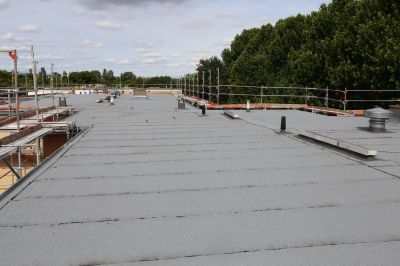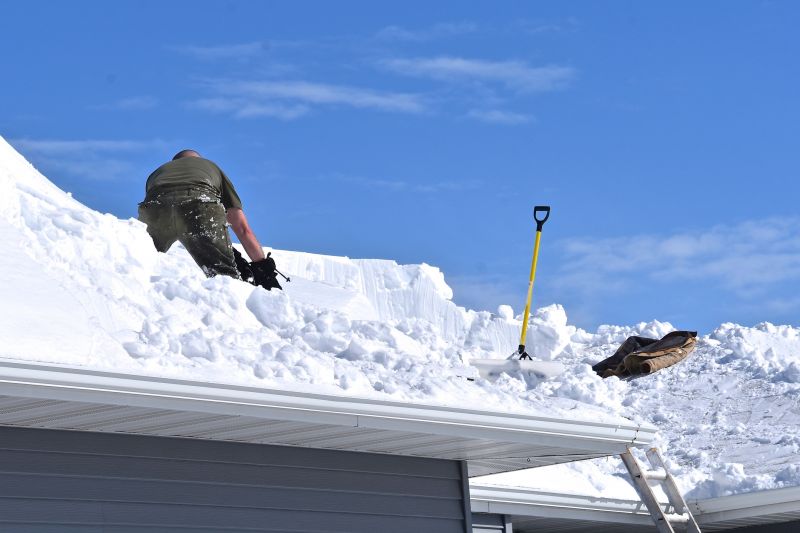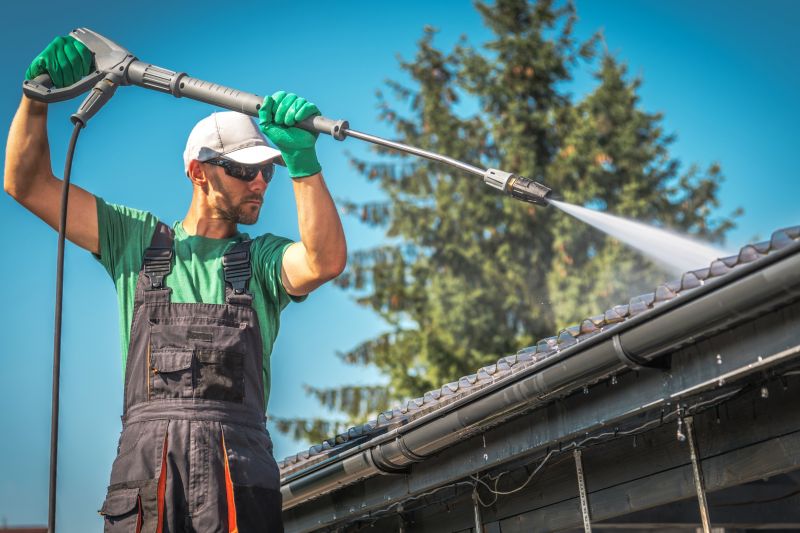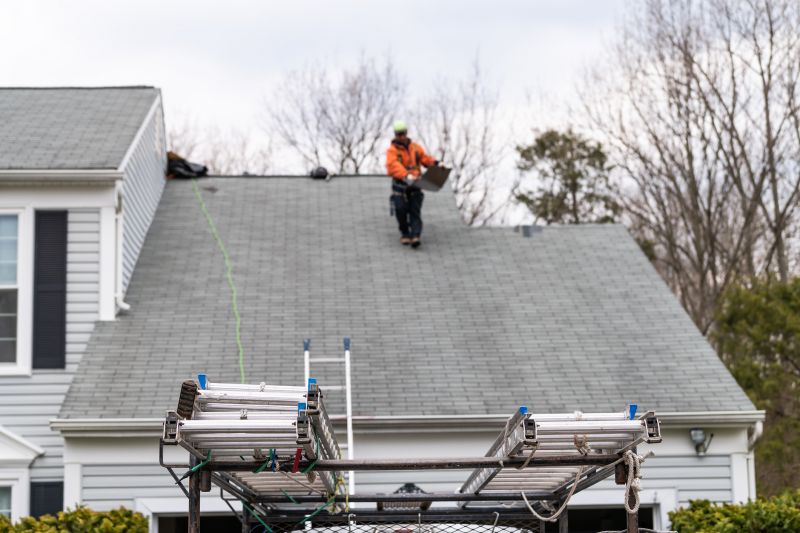Optimal Seasonal Timing for Roofing Services
Choosing the optimal time for roofing service can impact the quality and durability of the work. Weather conditions, temperature, and seasonal factors play significant roles in scheduling roofing projects effectively.
Spring offers moderate temperatures and longer daylight hours, making it ideal for roofing projects. It reduces the risk of weather delays and allows for thorough inspections.
Summer provides warm weather, but high heat and thunderstorms can cause delays. Early summer is preferable for avoiding extreme heat and rain.
Fall is considered one of the best times for roofing, with cooler temperatures and less rain. It allows for proper installation before winter.
Winter is generally less ideal due to cold temperatures, snow, and ice, which can hinder roofing work and affect material performance.

Ways to make Roofing Service work in tight or awkward layouts.

Popular materials for Roofing Service and why they hold up over time.

Simple add-ons that improve Roofing Service without blowing the budget.

High-end options that actually feel worth it for Roofing Service.

Finishes and colors that play nicely with Roofing Service.

Little measurements that prevent headaches on Roofing Service day.

A 60-second routine that keeps Roofing Service looking new.

A frequent mistake in Roofing Service and how to dodge it.

Small tweaks to make Roofing Service safer and easier to use.
Roofing services encompass a range of activities including inspections, repairs, replacements, and maintenance. Proper timing ensures these services are performed under optimal conditions, leading to longer-lasting results and fewer delays. Seasonal considerations are crucial; for example, cold weather can cause materials to become brittle, while excessive heat can affect adhesion and curing times.
Scheduling roofing tasks during favorable seasons minimizes weather-related disruptions and improves installation quality.
Rain, snow, and extreme temperatures can delay projects and compromise material performance, making seasonality a key factor.
Fall offers mild weather conditions, reducing the likelihood of delays and allowing for proper installation before winter.
Cold temperatures and snow can hinder work progress and increase risks for workers and materials.

Lower-waste or water-saving choices for Roofing Service.

The short, realistic tool list for quality Roofing Service.

Rough timing from prep to clean-up for Roofing Service.

Quick checks and paperwork to keep after Roofing Service.

Examples that show the impact a good Roofing Service can make.

Ways to make Roofing Service work in tight or awkward layouts.

Ways to make Roofing Service work in tight or awkward layouts.

Ways to make Roofing Service work in tight or awkward layouts.
| Season | Ideal Conditions |
|---|---|
| Spring | Moderate temperatures, longer days, minimal rain |
| Summer | Warm weather, early summer preferred, watch for thunderstorms |
| Fall | Cooler temperatures, less rain, ideal for installation |
| Winter | Cold, snow, and ice present challenges, less suitable |
Understanding the best timing for roofing services can help ensure quality workmanship and longevity of the roof. Proper scheduling, aligned with seasonal weather patterns, contributes to project success and minimizes the risk of delays or damage caused by adverse weather conditions.
Interested parties are encouraged to contact for more details or to schedule a roofing service at the most suitable time for their needs. Proper planning and timing are essential for achieving the best results in roofing projects.



